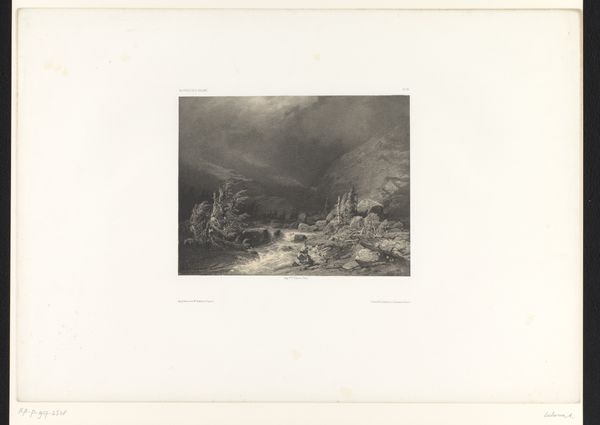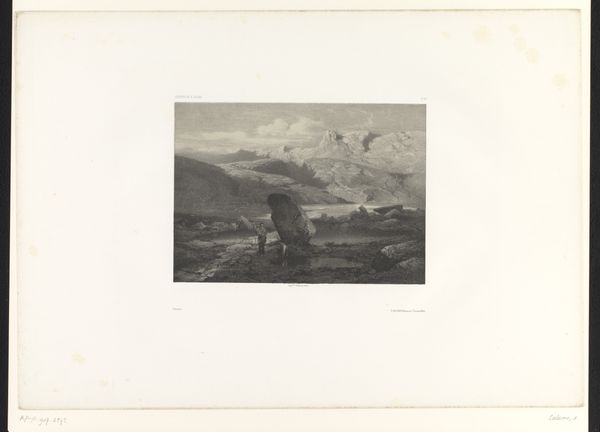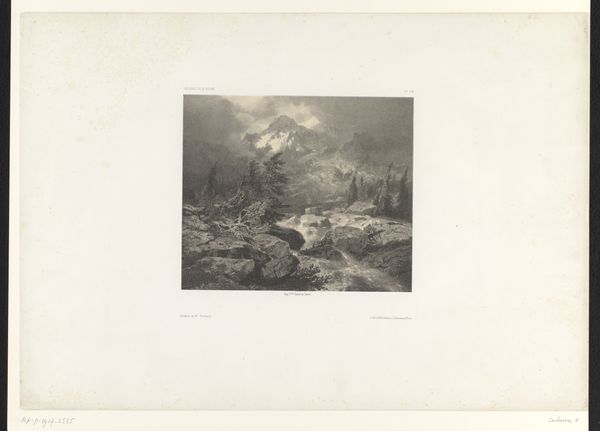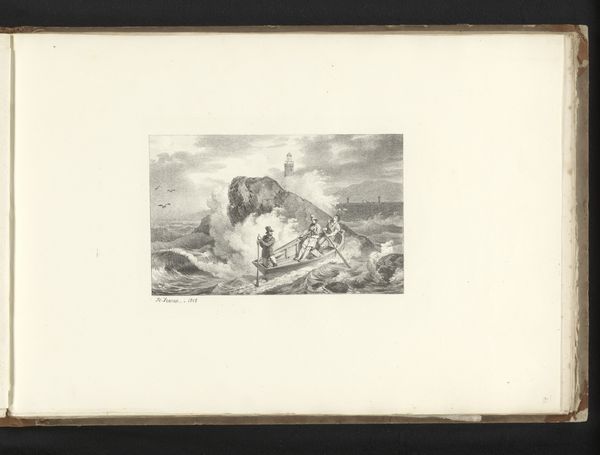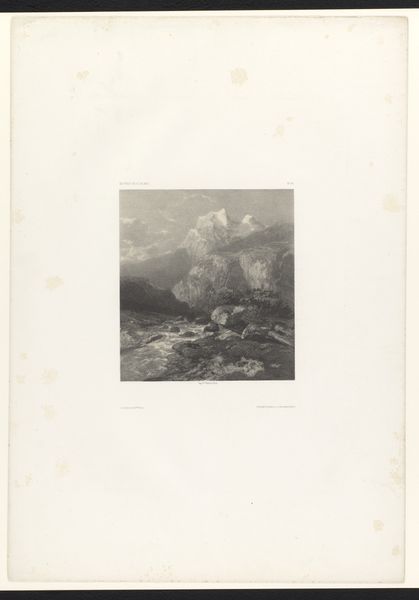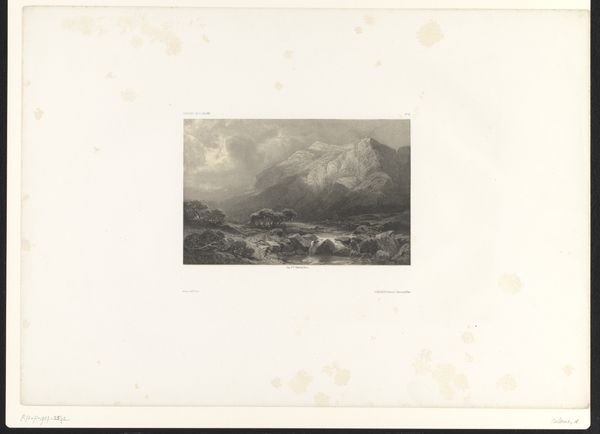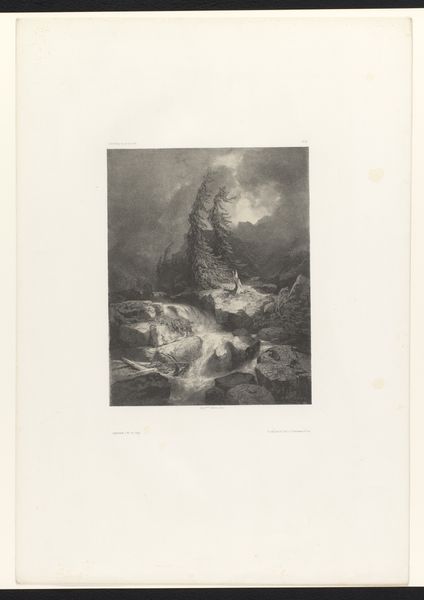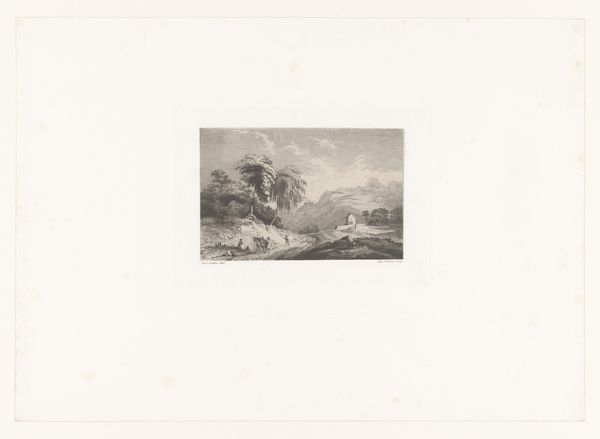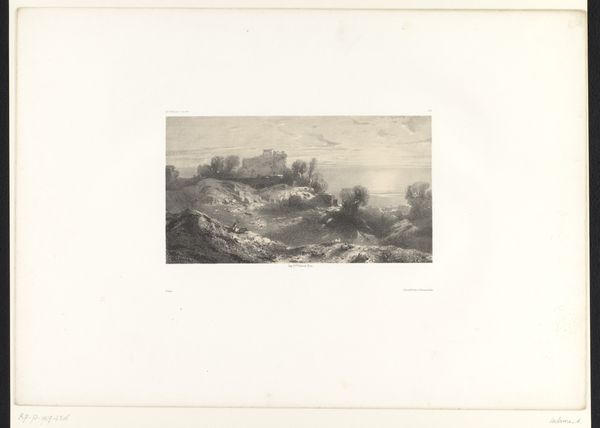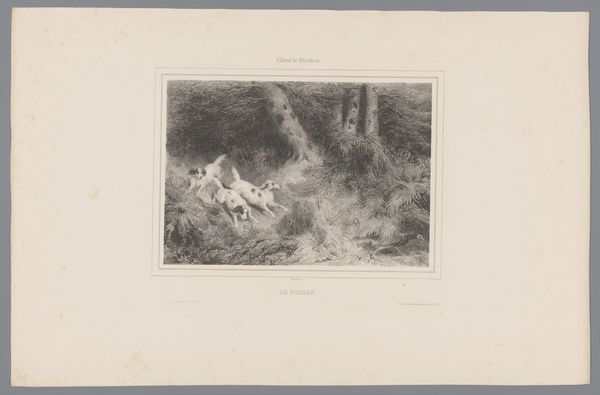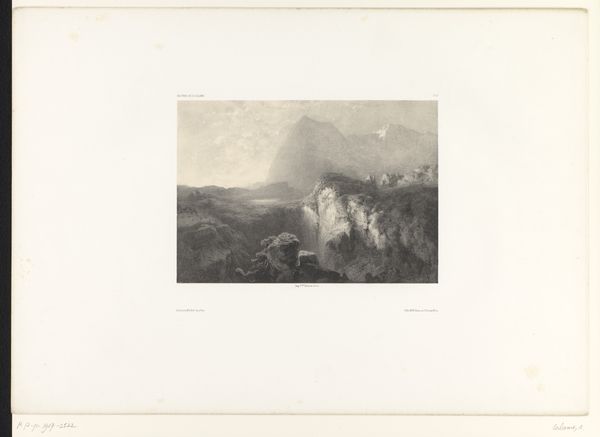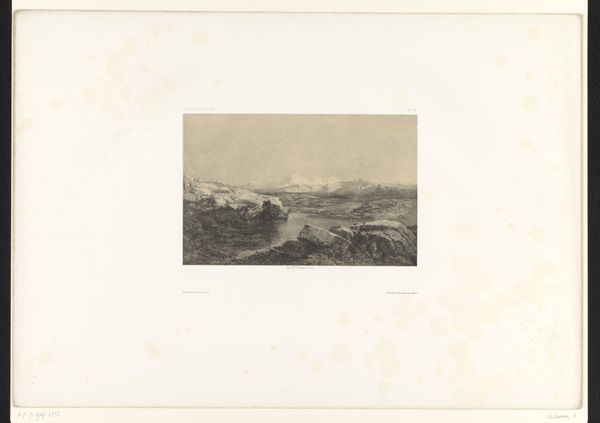
Dimensions: height 392 mm, width 562 mm
Copyright: Rijks Museum: Open Domain
Curator: This drawing, dating from between 1852 and 1855, is titled *Berglandschap met bomen, rotsen en een beek*, which translates to *Mountain Landscape with Trees, Rocks and a Stream*. Alexandre Calame, the artist, worked primarily in pencil and etching to create this piece. Editor: It's immediately striking, isn't it? There's a real sense of drama, almost theatricality, to the composition. The strong diagonal of the tree bending into the wind really grabs your attention, and the contrasting dark and light areas give it such depth. Curator: Calame was a key figure in the Romantic movement, and landscapes were considered powerful national symbols, often used to reflect national identity and spirit. In Switzerland, Alpine scenery evoked ideas of freedom and independence. His technical skills combined etching with pencil drawings which made for popular dissemination of romanticized alpine beauty to wider audiences. Editor: That certainly aligns with my intuition. The crooked trees evoke a kind of defiance in the face of harsh nature, I'm seeing more than trees. Their posture reminds me of people holding their stance. Is that why he gave the central rocks human face features, I wonder. Curator: Absolutely. Consider the symbolism of the stream. Water often represents the passage of time or even spiritual cleansing in art history. The stream could be viewed as the enduring strength of nature, a powerful metaphor for persistence and even defiance against political adversity of the time. Editor: The etching adds to that sense of time as well, doesn't it? The fine lines and precise detailing give it a sense of historical record, yet the wildness of the landscape counters such static depiction and adds to the dynamism that resonates strongly. Curator: Right, he found great commercial success selling images such as these in Switzerland’s burgeoning tourist industry, a subtle promotion of landscape as political iconography and national myth. Editor: Knowing about Calame's context makes the landscape feel less simply beautiful and more of a loaded idea. Thank you! Curator: The nuances that these layers of symbolic and artistic meaning provides enriches our experience of the landscape today. Thank you!
Comments
No comments
Be the first to comment and join the conversation on the ultimate creative platform.
